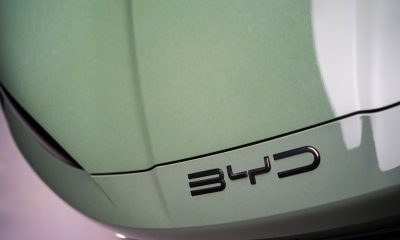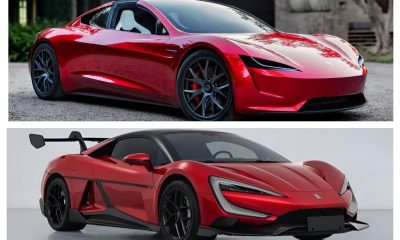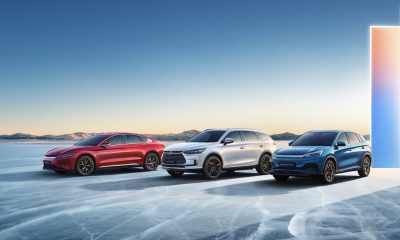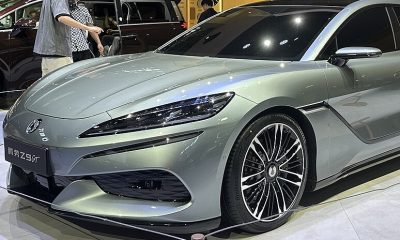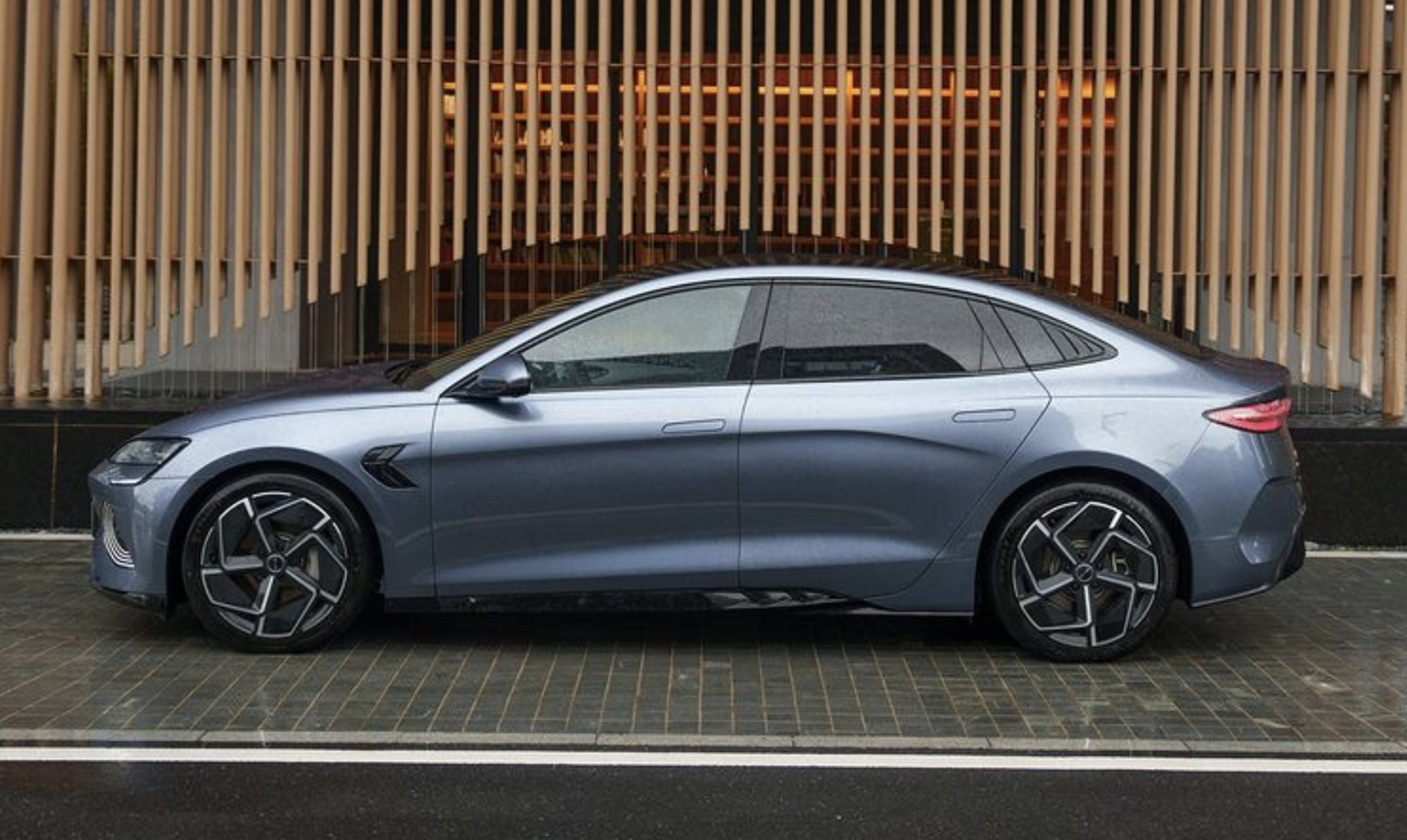
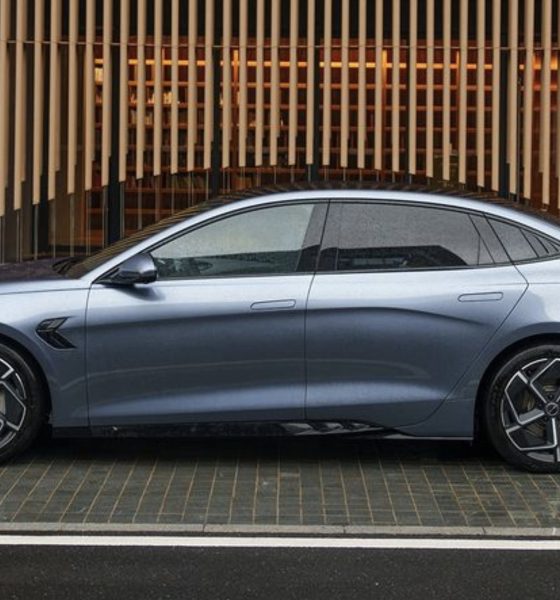
News
BYD aims to debut solid-state EV battery in 2027
Chinese automaker BYD has shared plans to debut initial demos of a solid state electric vehicle (EV) battery by 2027, according to one of the company’s top executives.
Sun Huajun, Chief Technical Officer of BYD’s battery business, last week said that the automaker would begin “demonstration use” of solid-state batteries by 2027, as stated during a forum and reported by CnEVPost. While the executive said he doesn’t expect large-scale adoption of solid-state EV batteries to take hold until 2030, he also highlights that other makers in the industry are developing the tech at a similar pace to BYD.
Eventually, Huajun says he expects the cost of solid-state ternary batteries to become comparable to liquid ternary batteries, though reaching volume production is expected to take at least a few years.
Solid-state EV batteries are expected to have substantially increased energy density, ultimately offering better driving range along with faster charging times.
Currently, BYD is the world’s second-largest battery maker behind Contemporary Amperex Technology Co., which is also based in China. Last year, BYD installed a total battery capacity of 153.7 GWh across its products for a 17.2 percent global market share, following CATL which held about 37.9 percent of the market.
READ MORE ABOUT BYD: BYD experimenting with humanoid robots
CATL is also one of many companies developing solid-state batteries, though Chief Scientist Wu Kai said last April that it was expecting to continue facing issues with mass production of the battery chemistry. Like BYD, however, CATL is expecting to begin its rollout of solid-state batteries in 2027, starting with very low volume.
Other automotive giants including Honda, Toyota, and Volkswagen have shared plans to produce solid-state EV batteries, though development has been slow going.
What are your thoughts? Let me know at zach@teslarati.com, find me on X at @zacharyvisconti, or send us tips at tips@teslarati.com.
Need accessories for your Tesla? Check out the Teslarati Marketplace:
Cybertruck
Tesla begins wide rollout of Full Self-Driving v14 to Cybertruck
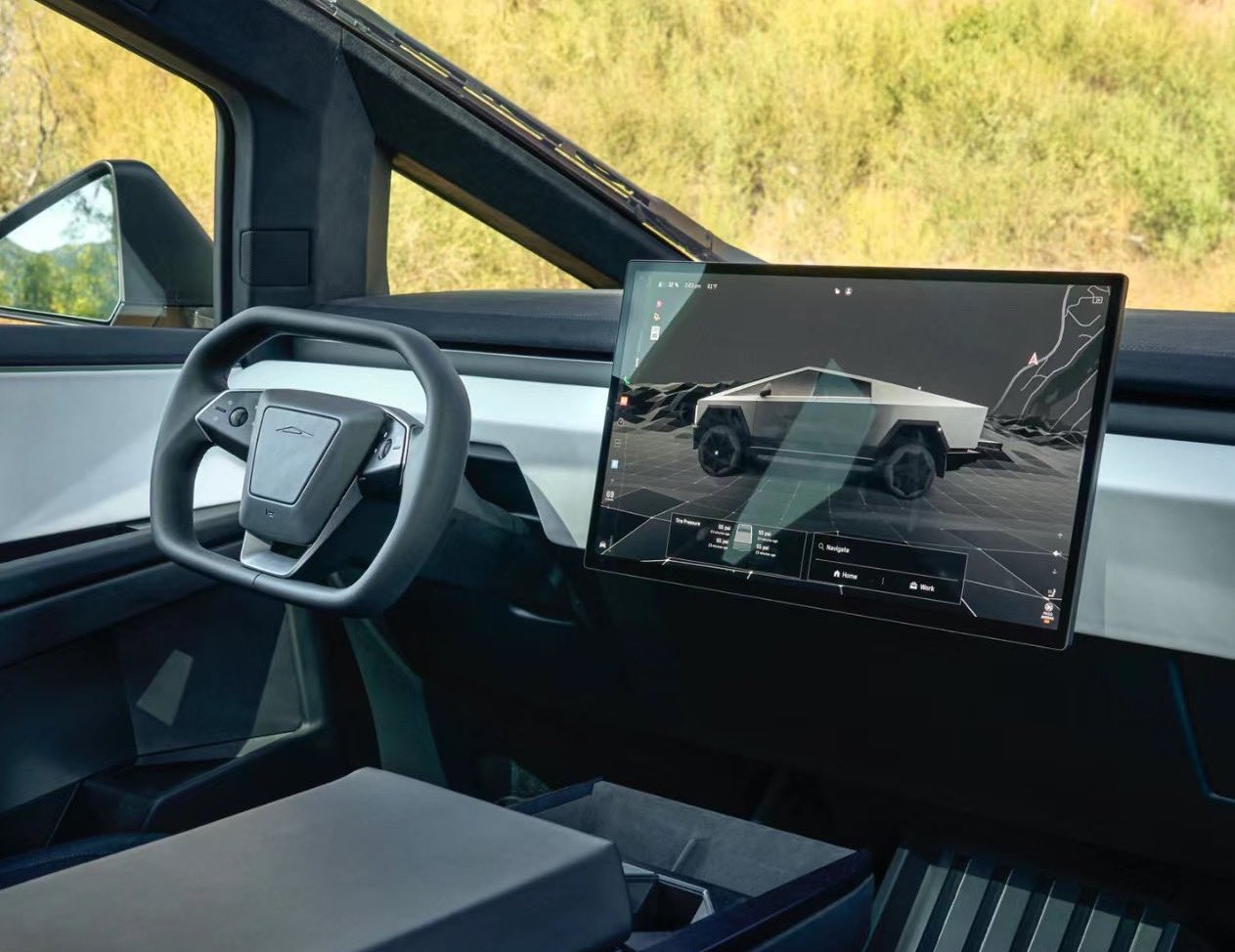
Tesla has officially begun the wide rollout of Full Self-Driving (Supervised) v14 to the Cybertruck about a month after the company started rolling it out to other vehicles in the fleet.
On Monday, Tesla officially started rolling out v14.1.5 to Cybertruck owners, the first FSD v14 rollout for owners of the all-electric pickup.
Owners have been anxiously waiting for Tesla to begin the wide release of v14 to Cybertruck, as the company said it would refine the suite for the vehicle.
Tesla has finally started rolling out to many owners, who are reporting that their Cybertrucks are downloading Software Update 2025.38.8.5, which contains FSD v14.1.5:
Tesla Self-Driving 14.1.5 for Cybertruck rolling out now! Too bad I just left for Austin. pic.twitter.com/WdxvEaK6ma
— Whole Mars Catalog (@WholeMarsBlog) November 3, 2025
So look what I just got on my @cybertruck ! FSD v14.1.5
Believe it or not @teslascope reported it about 5 minutes before it was visible on my app. That new API must be cooking! pic.twitter.com/GIiQrss4q5
— Chuck Cook (@chazman) November 3, 2025
Can confirm – arrived last night 🤝 https://t.co/0knxMK1Gfx pic.twitter.com/rqtU41pRaF
— Wes (@wmorrill3) November 3, 2025
Tesla has to be more cautious with rolling out FSD on the Cybertruck than on other vehicles for a few reasons. Initially, the Cybertruck utilizes an all-wheel steering system that turns differently than the S3XY lineup. This creates a challenge for the Tesla AI team as they have to cater to this specific maneuvering change.
Additionally, the Cybertruck is much larger, and the exterior cameras responsible for seeing the vehicle’s surroundings are placed differently than those of the other vehicles.
This requires additional calibration to ensure safety.
The full release notes for Full Self-Driving v14.1.5 are as follows:
- Added Arrival Options for you to select where FSD should park: in a Parking Lot, on the Street, in a Driveway, in a Parking Garage, or at the Curbside.
- Added handling to pull over or yield for emergency vehicles (e.g. police cars, fire trucks, ambulances).
- Added navigation and routing into the vision-based neural network for real-time handling of blocked roads and detours.
- Added additional Speed Profile to further customize driving style preference.
- Improved handling for static and dynamic gates.
- Improved offsetting for road debris (e.g. tires, tree branches, boxes).
- Improve handling of several scenarios including: unprotected turns, lane changes, vehicle cut-ins, and school buses.
- Improved FSD’s ability to manage system faults and recover smoothly from degraded operation for enhanced reliability.
- Added alerting for residue build-up on interior windshield that may impact front camera visibility. If affected, visit Service for cleaning!
Tesla Full Self-Driving v14 release notes for Cybertruck pic.twitter.com/fiMnjjTCY9
— TESLARATI (@Teslarati) November 3, 2025
News
Elon Musk shuts down Tesla ‘AMG’ division speculation: ‘Focus is autonomy’
“I think it’s best to leave that to the custom shops. Tesla’s focus is autonomous cars, building futuristic autonomous cars. We want the future to look like the future.”
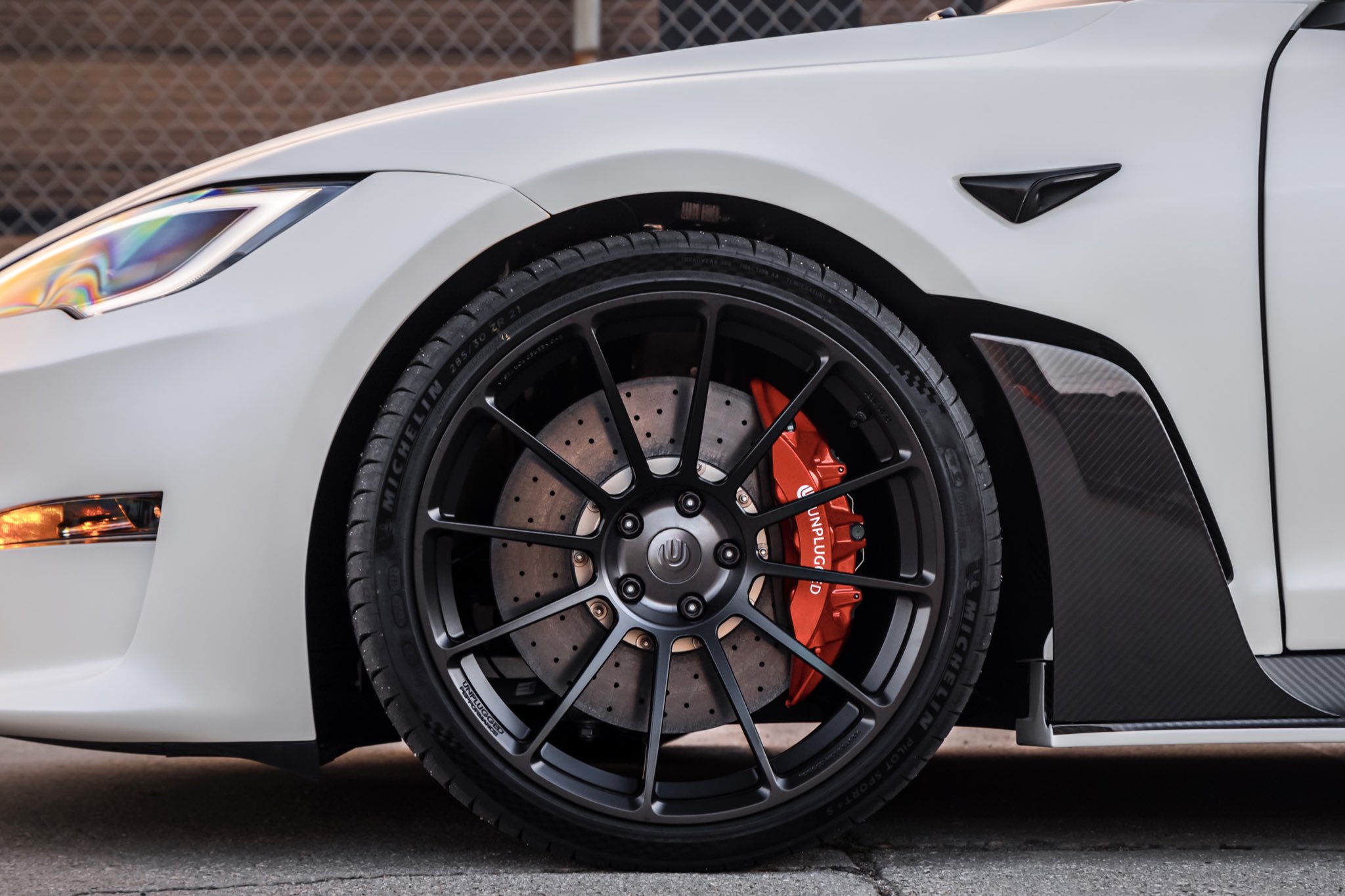
Tesla CEO Elon Musk was asked by Joe Rogan late last week whether the company would ever consider establishing an “AMG division” like Mercedes-Benz has established for powerful, race-inspired vehicles.
However, Musk turned down any talk of that, highlighting that the company is laser-focused on autonomous vehicles, seemingly hinting that any distraction from autonomy would be a detriment to the future.
Rogan drives a Tesla Model S himself, but it is not your run-of-the-mill all-electric sedan. Already outfitted with the Plaid powertrain that Tesla developed, Rogan took his vehicle to Unplugged Performance for a true performance outfitting.
The vehicle is completely overhauled with performance parts and seats. Known as the Model S-APEX, Rogan took delivery of it from Unplugged in January.
Rogan asked Musk on Friday during his most recent appearance on the Joe Rogan Experience podcast whether Tesla would ever establish an “AMG division” that would focus on catering Teslas to performance-based standards.
Musk said:
“I think it’s best to leave that to the custom shops. Tesla’s focus is autonomous cars, building futuristic autonomous cars. We want the future to look like the future.”
🚨 Elon Musk was asked by Joe Rogan if he would ever create an “AMG division” where customization and performance options are available.
Musk said:
“I think it’s best to leave that to the custom shops. Tesla’s focus is autonomous cars, building futuristic autonomous cars. We… pic.twitter.com/k7qy7UQc60
— TESLARATI (@Teslarati) October 31, 2025
Tesla fans have said for years that the company should consider acquiring Unplugged Performance and its Upfit Tesla division, which recently outfitted the Las Vegas Metropolitan Police Department’s fleet of Cybertruck cruisers.
However, it seems Tesla will keep things separate. Musk is primarily focused on autonomy, which will drive the technology forward and drive shareholder growth. Something like an outfitter for performance would be a cool thing for the owners who have the interest and the money.
It’s not a tremendous revenue driver or anything that would contribute to the financial state of the company. Mercedes-Benz, for example, is more accessible for consumers as it sold over 140,000 units from its AMG brand in 2024.
Tesla Model Y driver starts race in reverse, still wins against AMG SUV
It helps with driving revenue higher by as much as 15 percent compared to similar models that are not AMGs. However, would Tesla see this much of a benefit? Likely not, because the Performance trim already caters to many owners.
Cybertruck
Tesla Cybertruck fleet takes over at SpaceX’s Starbase
Interestingly, the Cybertruck uses the same exterior, a stainless steel alloy, as SpaceX rockets. This synergy between the two companies and their very different products shows a very unified mentality between Musk companies.
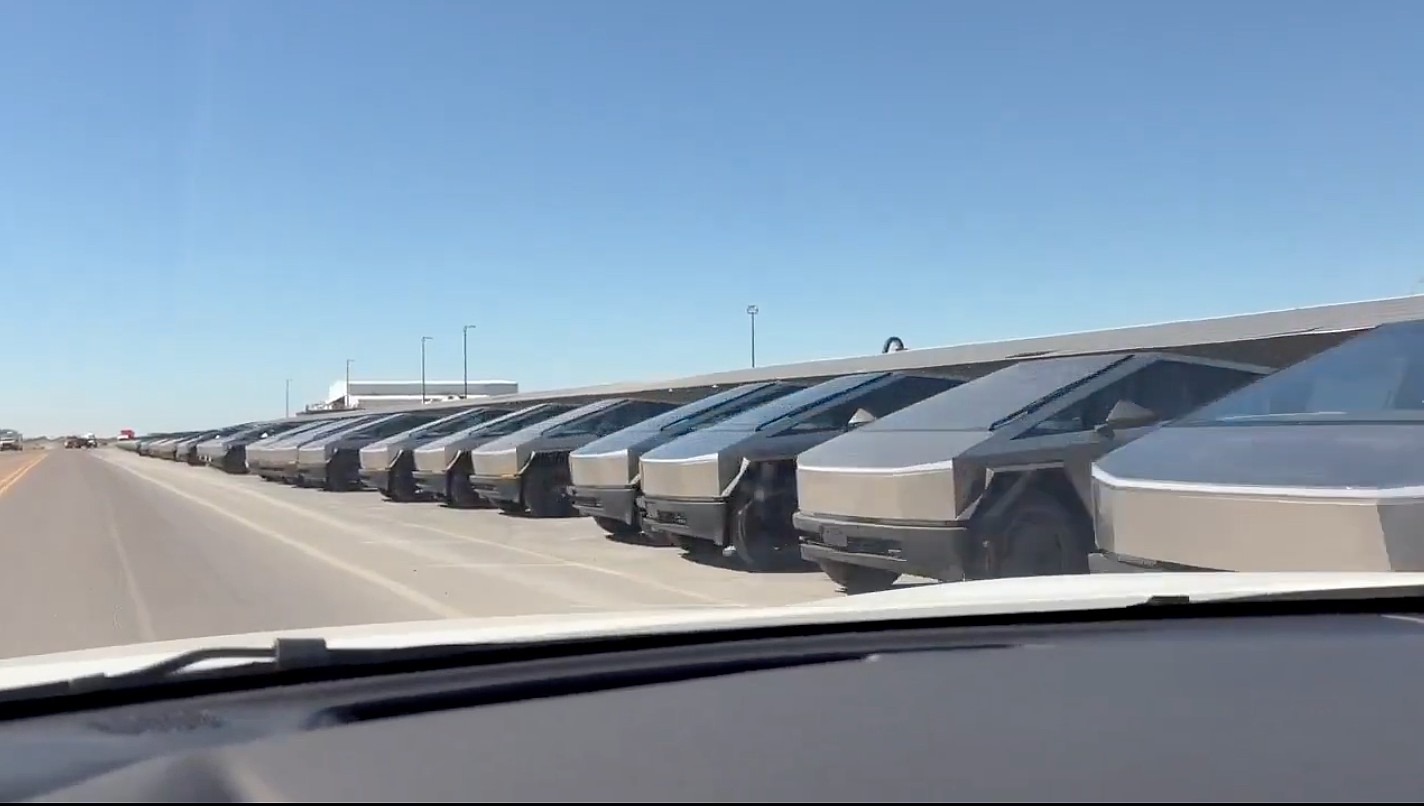
Tesla Cybertrucks have taken over at SpaceX’s Starbase facility in Texas, as hundreds of the all-electric pickup trucks were spotted late last week rounding out a massive fleet of vehicles.
The Cybertruck fleet is geared toward replacing gas vehicles that are used at Starbase for everyday operations. The only surprise about this is that it was not done sooner:
Was just visiting. pic.twitter.com/5Q9wPPaeuH
— Derek Li (@derek1ee) October 31, 2025
Deliveries have been going on for a few weeks, as Cybertrucks have made their way across the state of Texas from Austin to Starbase so they could be included in SpaceX’s fleet of vehicles at the facility.
Interestingly, the Cybertruck uses the same exterior, a stainless steel alloy, as SpaceX rockets. This synergy between the two companies and their very different products shows a very unified mentality between Musk companies.
However, there are some other perspectives to consider as SpaceX is utilizing such a massive fleet of Cybertrucks. Some media outlets (unsurprisingly) are seeing this as a move of weakness by both Tesla and SpaceX, as the aerospace company is, in a sense, “bailing out” lagging sales for the all-electric pickup.
It’s no secret that Tesla has struggled with the Cybertruck this year, and deliveries have been underwhelming in the sense that the company was anticipating between 1 million and 2 million orders for the vehicle before it was widely produced.
A lot of things changed with the Cybertruck between its 2019 unveiling and 2023 initial deliveries, most notably, price.
The price of the Cybertruck swelled significantly and priced out many of those who had pre-ordered it. Some have weighed the option of whether this purchase was a way to get rid of sitting inventory.
However, it seems more logical to consider the fact that SpaceX was likely always going to transition to Teslas for its fleet, especially at Starship, at some point.
It doesn’t seem out of the question that one Musk company would utilize another Musk company’s products, especially considering the Cybertruck has been teased as the vehicle that would be present on Mars.
-
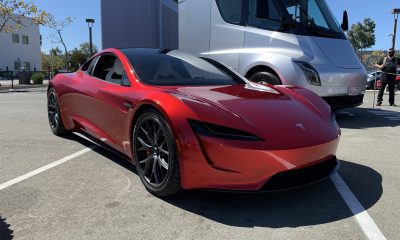
 News2 weeks ago
News2 weeks agoTesla updates fans on its plans for the Roadster
-
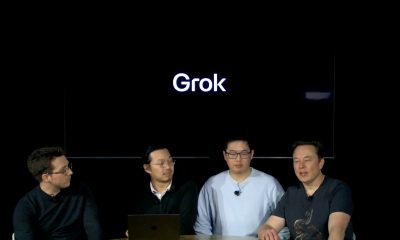
 Elon Musk2 weeks ago
Elon Musk2 weeks agoElon Musk: Grok 5 now has a 10% chance of becoming world’s first AGI
-
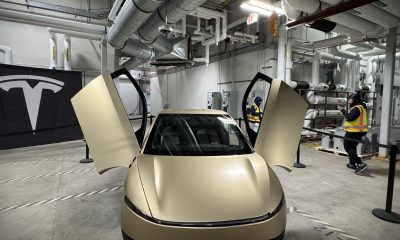
 News2 weeks ago
News2 weeks agoTesla is ramping up its hiring for the Cybercab production team
-
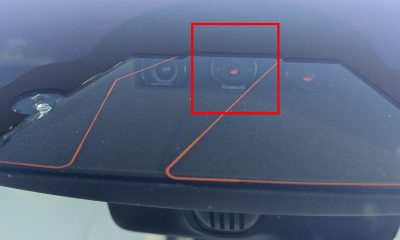
 News2 weeks ago
News2 weeks agoTesla rolled out a new feature with FSD v14 to fix a major complaint
-

 Elon Musk2 weeks ago
Elon Musk2 weeks agoElon Musk hits back at former Tesla employee who disagrees with pay package
-
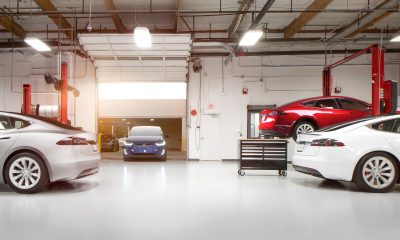
 News2 weeks ago
News2 weeks agoTesla just made Service even easier and more convenient
-
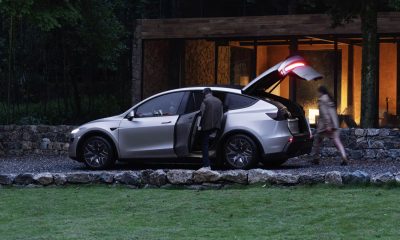
 News2 weeks ago
News2 weeks agoTesla Model Y L becomes China’s 4th best-selling mid-to-large SUV in its first month of sales
-

 News2 weeks ago
News2 weeks agoTesla Full Self-Driving’s new version officially gets a wider rollout


